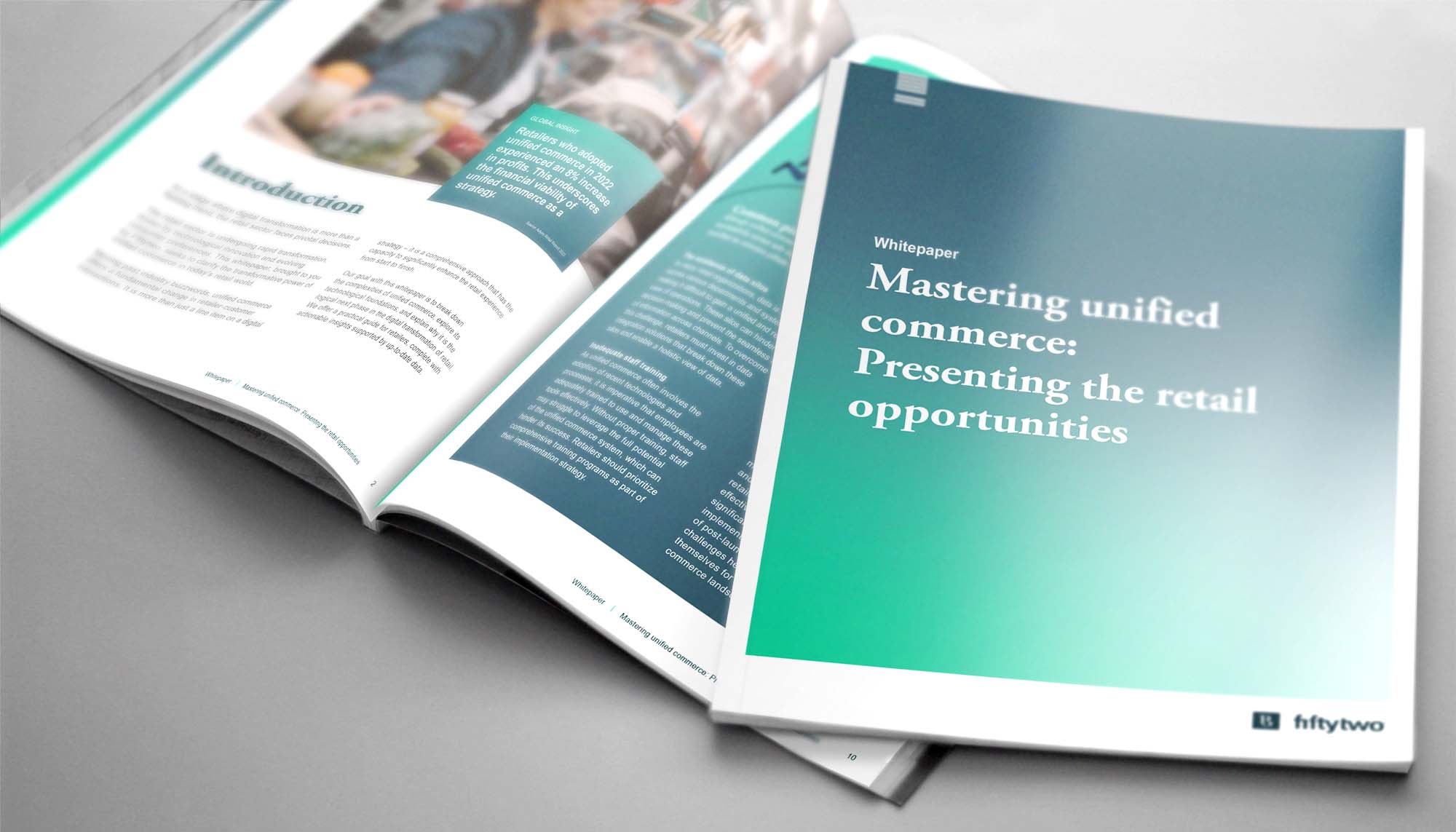
Unified commerce
– connecting every channel, driving every sale
Unified commerce is about connecting your stores, systems, and channels – and creating one seamless experience for your customers.
Unified commerce is a strategy that connects all your retail elements, from inventory and orders to customer engagement, across all channels and touchpoints. Unlike other strategies, unified commerce uses a single, centralized platform, which gives you a complete, real-time view of your business operations. This is the key to delivering a seamless, consistent, and personalized customer experience.
Benefits of unified commerce
Unified commerce is not only a must for your customers, but also for your business success. By adopting unified commerce, you can enjoy many benefits:
Boosting customer loyalty and satisfaction
By providing a consistent and customized experience across channels, you can build a strong relationship with your customers and make them come back and refer you to others.
Improving operational efficiency and cost savings
By having a single system that handles all your retail aspects, you can simplify and streamline your processes and systems, and reduce errors and waste.
Increasing flexibility and innovation
By having a system that can adapt and respond to changing customer needs and market conditions, you can be more agile and creative in your offerings and solutions.

Unified commerce strategy:
Getting started
Unified commerce is not just a goal, but an ongoing journey, where technology meets retail strategy. To implement unified commerce effectively, you need to follow some best practices:
Choosing the best solutions for each retail component
Instead of using a one-size-fits-all solution that may not meet all your needs and challenges, you should choose the best and most suitable solutions for each part of your retail operation, such as POS systems, inventory management, or customer relationship tools. This will ensure that you have a system that excels in each area, and that can integrate seamlessly with each other.
Collaborating with the best partners for each retail component
To get the most out of unified commerce, you need to work with the best and most suitable partners for each part of your retail operation, and that can offer you innovative tools and solutions that support your unique unified commerce strategy. Such a partner can help you plan, implement, and optimize your unified commerce journey, as well as provide you with ongoing support and advice.
Measuring and evaluating your performance across channels and touchpoints
To ensure that you achieve the desired results with unified commerce, you need to constantly monitor and analyze your performance across channels and touchpoints and compare it with your goals and expectations. This will help you identify any issues or opportunities for improvement and adjust your strategy accordingly.

Mastering unified commerce: presenting the retail opportunities
Discover the transformative power of unified commerce in our latest whitepaper. Learn how integrating your retail operations across all channels can significantly enhance customer experiences and drive your business forward.
Key insights
- Seamless integration of retail channels for enhanced customer experiences
- Using real-time data for impactful strategic decisions
- Exploring the role of innovative technologies in retail
- Prioritizing customer-centric approaches
- Essential security measures for modern retail
...and many more valuable insights!
Ready to redefine your retail strategy?
Download our whitepaper and step into the future of unified commerce.
The Fiftytwo way to unified commerce
Fiftytwo’s approach to unified commerce is centered around a ‘best of breed’ philosophy. We understand that unified commerce is not just a goal, but an evolving journey, where technology meets retail strategy. As a collaborative partner in this journey, Fiftytwo offers innovative tools and profound expertise that elevate the industry. Our commitment is to deliver versatile solutions that not only integrate effortlessly with existing systems, but also excel in their specific areas, supporting your unique unified commerce strategy.
Dynamic and flexible pricing
You can easily create and manage complex pricing rules and scenarios, such as discounts, coupons, loyalty programs, etc., and apply them to different products, categories, channels, or customer segments, based on various criteria, such as time, location, demand, etc.
Our dynamic pricing core, 52MASTERPRICER, enables the seamless interplay between pricing and promotions across various sales channels and touchpoints, offering real-time responsiveness and consistency.
Seamless and omnichannel POS
You can offer your customers a smooth and convenient checkout process, whether they shop in-store, online, or through mobile devices, and enable them to switch between channels without any hassle or friction
Our versatile and mobile POS solution, 52ViKING, functions as both a traditional POS and a mobile POS (MPOS), adaptable to any environment, and provides centralized control of pricing and data, enhancing the retail experience across multiple channels.
Data-driven and intelligent insights
You can leverage the power of data and analytics to optimize your unified commerce strategy and use AI and machine learning to automate and personalize your decisions, based on customer behavior, preferences, and feedback.
Our structured data collection and analysis tools help you monitor and evaluate your performance across channels and touchpoints and identify any issues or opportunities for improvement.
From Single Channel to Unified Commerce
To obtain a deeper understanding of Unified Commerce, it may be relevant to turn back time and look at the journey from Single Channel to Multi Channel, from Multi Channel to Cross Channel, from Cross Channel to Omnichannel, and from Omnichannel to Unified Commerce.
Single Channel
Multi Channel
It will not be possible for your customers to use a gift card across your channels or return a product purchased at your webshop in your physical store.
Cross Channel
Omnichannel
Omnichannel is perceived as a further development of the cross channel. The aim is that your customer's shopping journey, across your channels, work even more smoothly. They must be offered an even more seamless and relatable shopping experience - no matter which channel they choose to shop on. With a cross channel business model, your channels are connected. With an omnichannel business model, they are integrated. This is reflected in the fact that information your customers have entered on one channel can be transferred to other channels - both physical and digital. For example, your customer can create a profile on your webshop that will also be available on a mobile device application, which they may also be able to access from a screen in your physical store.
When you integrate your various channels, you only need to maintain data in one place, and that is, in addition to streamlining your time, associated with several benefits. You get more valid data, and you ensure that your customers experience consistency in prices and stock across your channels. That way, your business becomes more reliable, and your customers more loyal.
Unified Commerce
To create the coherence required by an omnichannel business model, things must be seen from a bigger perspective, and the idea of channels must be ditched. Instead, the focus should be on your customer's experience with your overall business. However, it is easier said than done. You may be forced to work in channels if you lack the necessary solutions and integrations to create coherence between your systems, data, etc.
Unified commerce is a further development of omnichannel, which is a total solution that allows you to execute your omnichannel business model. Your database is integrated and exchanged directly between your channels. Thus, you achieve an overall picture of your customer that gives you insight into your customer's needs and desires here and now. With this knowledge, you can tailor personalized offers to your customers, and give them a personalized service when shopping in your physical store. That way, you can increase your chances of both upselling and additional sales.
